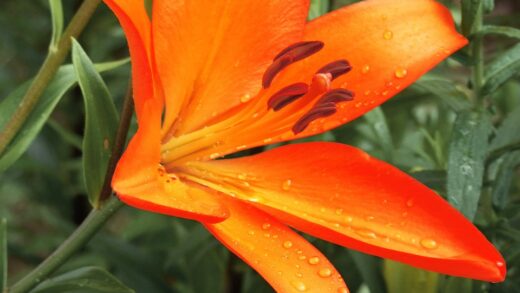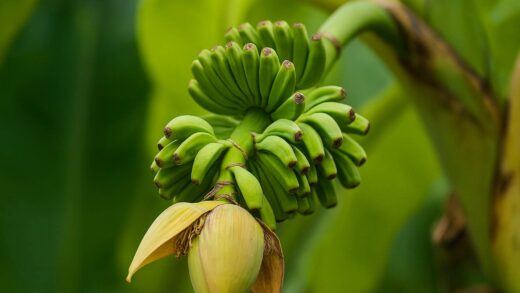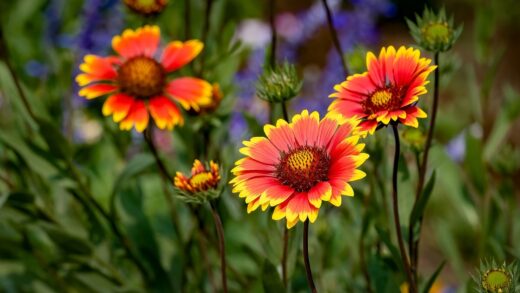Understanding the water requirements and implementing proper irrigation practices for Virginia creeper is fundamental to cultivating a healthy, vigorous vine. While renowned for its toughness and drought tolerance once established, its hydration needs evolve significantly from a newly planted specimen to a mature, sprawling climber. Inappropriate watering, whether too much or too little, can lead to stress, reduced growth, and an increased susceptibility to pests and diseases. Mastering the art of irrigation for this plant involves recognizing its needs at different life stages, adapting to environmental conditions, and knowing the subtle signs that indicate thirst or saturation.
The fundamental role of water for the vine
Water is the lifeblood of any plant, and for a fast-growing vine like Virginia creeper, it plays several critical roles. It is the primary medium for transporting nutrients from the soil, through the roots, and up into the stems and leaves where they are used for growth and metabolic processes. Water is also a key component of photosynthesis, the process by which the plant converts light energy into chemical energy to fuel its development. Without adequate water, these essential functions are compromised, leading to stunted growth and poor health.
Furthermore, water pressure within the plant’s cells, known as turgor pressure, is what keeps the stems and leaves firm and upright. When a plant is dehydrated, it loses turgor pressure, which results in the characteristic wilting of its foliage. For a climbing plant like Virginia creeper, maintaining turgor is essential for supporting its long, sprawling stems and ensuring its leaves are properly positioned to capture sunlight. Consistent hydration supports the structural integrity of the entire plant.
Water also plays a vital role in cooling the plant, especially during hot summer weather. Through a process called transpiration, water evaporates from the leaf surfaces, which has a cooling effect similar to how perspiration cools the human body. This process is crucial for preventing the plant’s tissues from overheating and sustaining damage on hot, sunny days. Adequate soil moisture ensures that the plant can transpire freely to regulate its temperature effectively.
Finally, a well-hydrated Virginia creeper is better equipped to defend itself against pests and diseases. A plant stressed by drought has a weakened immune system, making it a more attractive target for insect pests and more susceptible to fungal infections like powdery mildew. Proper watering is therefore a key component of an integrated pest management strategy, acting as a preventative measure that promotes the plant’s natural resilience and vigor.
More articles on this topic
Irrigation strategies for newly planted creepers
When a Virginia creeper is first planted, its root system is small and confined to the original root ball. It has not yet had the chance to extend deep into the surrounding soil in search of moisture. Consequently, during its first one to two growing seasons, a young vine is much more vulnerable to drying out than an established one and requires a consistent and attentive watering schedule to ensure its survival and successful establishment. The primary goal of irrigation at this stage is to encourage deep root growth.
Immediately after planting, the vine should be watered deeply to settle the soil around the roots and eliminate air pockets. For the first few months, a regular watering routine is crucial. A thorough soaking once a week is a good general guideline, but this frequency must be adjusted based on weather conditions. In periods of high heat and no rain, it may need to be watered every two to three days. The key is to check the soil moisture regularly; the top two inches of soil should be allowed to dry out slightly before watering again.
The method of watering is just as important as the frequency. It is essential to water deeply rather than providing light, frequent sprinklings. Deep watering encourages the roots to grow downwards in search of moisture, creating a more extensive and drought-resistant root system for the future. Use a soaker hose or let a regular hose trickle slowly at the base of the plant for an extended period. This allows the water to penetrate deep into the soil profile rather than running off the surface.
Applying a two- to three-inch layer of organic mulch around the base of the newly planted vine can be incredibly beneficial. Mulch, such as wood chips, shredded bark, or compost, helps to conserve soil moisture by reducing evaporation from the surface. It also helps to regulate soil temperature, keeping the roots cooler in the summer, and suppresses the growth of weeds that would otherwise compete with the young vine for water and nutrients. This simple step can significantly reduce the watering burden and promote healthier growth.
More articles on this topic
Watering established plants
Once a Virginia creeper has been in the ground for two or more years and has shown vigorous new growth, it is generally considered established. At this point, it has developed a deep and extensive root system that is highly efficient at finding and absorbing water from the soil. This is when the plant’s renowned drought tolerance becomes evident. For a mature, established vine, supplemental irrigation is often unnecessary, as it can typically sustain itself with natural rainfall in most temperate climates.
The resilience of an established plant means that the focus of the gardener should shift from a fixed schedule to one of observation. Instead of watering automatically, only provide supplemental water during periods of extreme or prolonged drought. A clear sign that an established vine may need water is when the leaves begin to look slightly wilted or dull during the heat of the day but do not recover their turgidity in the cooler evening hours. This indicates that the plant is unable to draw enough moisture from the soil to meet its transpiration needs.
When it is necessary to water a mature vine, the principle of deep watering still applies. A long, slow soaking that allows the water to penetrate deep into the root zone is far more effective than a quick, superficial spray. This ensures that the entire root system has access to moisture and reinforces the deep-rooting habit. Watering in the early morning is the most efficient practice, as it minimizes water loss to evaporation and allows the foliage to dry before nightfall, which helps to prevent fungal diseases.
It is important to remember that even established plants growing in certain conditions may require more water. For example, a vine growing in a container, in very sandy soil, or on a particularly hot, sun-drenched wall will dry out more quickly and may need more frequent watering than one growing in loamy soil in a cooler location. Always assess the specific environmental context of the plant when making decisions about irrigation for mature specimens.
Recognizing signs of overwatering and underwatering
Being able to identify the signs of both too much and too little water is a crucial skill for any gardener. An underwatered Virginia creeper will often give clear signals of distress. The most obvious sign is wilting leaves. The foliage will droop and may feel dry or crispy to the touch. The leaves may also start to turn yellow or brown, particularly at the edges, and may drop from the plant prematurely. Overall growth will be slow and stunted as the plant conserves its limited resources.
Paradoxically, some of the signs of overwatering can be surprisingly similar to those of underwatering. An overwatered plant will also have yellowing leaves, but they will often feel soft and limp rather than dry and crispy. This is because waterlogged soil deprives the roots of oxygen, causing them to suffocate and die. As the root system becomes damaged, it can no longer absorb water and nutrients effectively, leading to symptoms of dehydration in the foliage even though the soil is saturated.
One of the most definitive signs of overwatering is root rot. If the plant appears to be failing despite ample moisture, it is worth carefully inspecting the soil and the roots near the base. Soil that is constantly wet and smells sour or stagnant is a clear red flag. The roots of an overwatered plant will be brown or black, mushy, and may fall apart easily when handled, in stark contrast to the firm, white roots of a healthy plant. Overwatering is generally a more serious and harder-to-correct problem than underwatering.
To avoid these issues, always check the soil before watering. The most reliable method is to use your finger to test the moisture level. Insert your finger two to three inches into the soil near the base of the plant. If the soil feels dry at that depth, it is time to water. If it feels moist, it is best to wait and check again in a day or two. This simple, hands-on approach is far more accurate than adhering to a rigid schedule and is the key to providing the right amount of water at the right time.


















